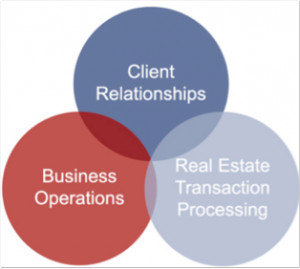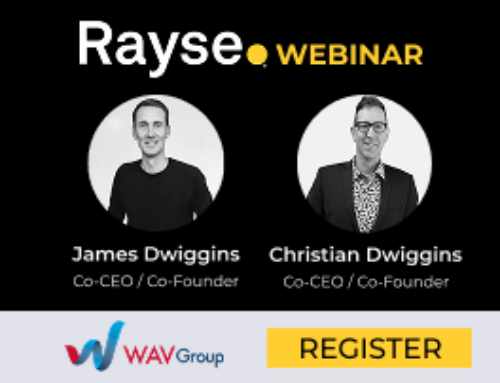Part 3 of a 5 part series called Broker Technology, an Industry Missing Backbone
By WAV Group
Brokers, large and small, face significant challenges they did not face 20 years ago. Profit margins have eroded and control over their independent contractors has been minimized. The consumer has taken on a much more vocal role in the process and is forcing transparency and responsiveness never before experienced. Some of these challenges are related to technology and the advance of the Internet while others are cultural challenges that have come about through the changing broker/agent relationship. WAV Group’s new white paper explores the issues behind the broker’s challenge to gain better control and visibility into their companies while re-establishing a new value proposition for their agents!
While part one of this five part series focused on understanding how brokers got into thetechnological mess they find themselves today. The second part of this series discussed how to get through the maze of broker technology. We have now come to part 3 of this 5 part series, to discuss the light at the end of this tunnel.
Brokers are amazing people. They are leaders, motivators, trainers and counselors.
The situation we are dealing with in the real estate broker’s world is really very similar to other examples we are all familiar with. If we look at some of those examples it points to a logical approach for broker’s to consider as they work to establish a more elegant end-to-end solution for their businesses. The benefits we are looking for with this improved infrastructure are very clear:
- Better ways to measure effectiveness of marketing efforts
- Reducing or eliminating redundant data entry
- Gaining control of data throughout the real estate operation
- Creating a clear picture of the company from beginning to end
- Establish an infrastructure to allow for informed business decisions
Recently WAV Group conducted focus groups and in-depth interviews with brokers from around the country. One broker we interviewed put it very well. She sees the need for technology to help her in three key areas of her business.

- First she wants technology to help her generate, nurture, convert and maintain customers for her business.
- Second she wants to make the process of transacting business more efficient, with less risk and less cost.
- Third she wants to use technology to streamline her business operations.
She believes that technology companies need to develop methods for seamlessly connecting all three of these business needs into one business suite that connects easily to the MLS as well as her back office accounting systems.
Examples of Good Infrastructure
Why have franchises been so successful? Why are there really only two major computer operation systems – Microsoft and Apple? Because, in both cases they provide an infrastructure that allows the business or process to work more effectively. When you buy afranchise, what you are buying is a system. The system is intended to streamline, as much as possible, operational areas of the business, so franchisees don’t have to recreate the wheel. Along with a brand and a support network comes an infrastructure for things like procuring product, reporting, business analysis, marketing, etc. Large franchises send leads to individual agents and provide the tools to monitor the responsiveness of each individual agent. If the agent does not follow-up quickly enough they will be removed from the lead allocation process.
Do you think owners of a MacDonald’s franchise know how their location is performing? Definitely! They are plugged into to a network of market statistics and data analysis that provides them a clear picture of their business so they can manage their profitability on an hourly basis.
If we look at software and operating systems we see other similarities. In the early days of business and productivity software there were many choices for Word Processing and Spreadsheets. There were different filing systems and database programs. Companies like WordPerfect, WordStar and File Maker competed for users. Today, things have changed. Yes, there are still numerous individual products but the majority of users have picked a platform that provides a more “integrated” infrastructure, either with Microsoft or Apple.
If you buy Microsoft Office, you don’t go out and buy a separate spreadsheet package, you use Excel. Why, because it works with all of the other Microsoft products. You can move freely between PowerPoint and Word, or Excel and Access. The infrastructure exists to allow for easy integration. The same is true for Apple products, maybe even more so. Apple has done a great job of making it painless to integrate different Apple or Apple approved products. The problems occur when you want to go from Microsoft to Apple or vice versa. We still don’t have a perfect world there yet.
With real estate, things are evolving in a similar way, but as it always seems to be in real estate, the process is taking a little longer. The good news is that we are finally beginning to see vendors that offer integrated modular solutions that offer levels of integration in more areas of the broker business. Brokers now have some better choices.
If we take a look at the evolution of broker real estate products we see the process is very similar to the process we have seen in the larger software industry. The need for integration is being addressed, not by standards, but by forward thinking vendors who are creating a set of enterprise level products to manage broader pieces of the real estate business.
Integration and the New “Virtual Brokerage Community”
We believe technology, while it has caused challenges for brokers today, can also be the building blocks to create the new virtual office community. Brokers can once again be the rallying point for their agents and their businesses when they use technology in ways that match the new agent paradigm and replace their old “brick and mortar” community, with a new “technology based” community. Like the old community the broker will be key in guiding, educating and supporting their agents. Agents will receive value in the way they want it today. Agents will feel connected as they once did by going to the brick and mortar location but will not feel trapped or slowed down. This community will acknowledge the reality of how agents want and need to do business today.
This new brokerage will provide:
- Integrated services
- Data efficiency and no redundancy
- Clear views into business processes
- Tools for agents that minimize input and maximize benefits
- An education center that is virtual, available 24/7
- Business tools need to reduce expenses and maximize profits
Take the Test!
Does Your Company Show the Signs and “Pain” of Non-integration?
What happens when infrastructure is not solid and mature? Whenever there is a multiple vendor vs. a single vendor approach for processes that stretch throughout an organization you will see some of the same issues:
- Lack of understanding of success drivers for the business
- Redundancy in data entry
- Need to work with multiple product interfaces
- Increased costs for staff and service contracts for support for multiple products?
- Increase training costs
- Reduced agent product adoption
- The need to find products/fixes to convert data from one system to another to help them “talk” to one another
- Extensive consulting fees to evolve technology solutions
When businesses adopt products from multiple vendors, in an area where strong standards don’t exist, the need for integration doesn’t go away but providing it becomes more complex and expensive. In these scenarios you begin to see loads of “specialty” solutions designed to solve the problem. Products are created to do nothing more than to link other products together so they can communicate and share information. Software is created to move data between products or, worse yet, data is not shared. Numerous examples exist of vendors charging high fees to create processes that allow for data to be shared. Take MLS systems for example. It was not uncommon in the 90’s for MLS vendors to bill 600 hours of programmer time for conversion of MLS data from one vendor to another. At $100 an hour that equates to $60,000 for a one-time conversion. If MLSs wanted to share data on an ongoing basis conversion programs had to be written and maintained also at a considerable cost. While brokers may not face this exact problem there is no question that data ideally would be shared and integrated throughout an organization and that in most cases it simply isn’t happening automatically.
Ask yourself the following questions:
1. How many points within my real estate company do I have to enter the same information? Use the following as a guide, but there may be more!
- Office roster
- Back office/billing system
- MLS system
- Marketing/communication system
- Floor time roster
- Broker website
- Agent website
- 3rd party sites – i.e., Realtor.com, Zillow.com, Trulia.com etc.
- Advertising system
- Email system
- MLS system
- Franchisors
- Real Estate Boards
- Accounting system
2. How many different products do staff and agents need to learn to take advantage of allproducts offered?
3. How many different products does your company pay support fees for?
4. What are the training requirements in your company? Are there multiple trainings required to master all available products?
5. Do you currently pay fees to manage data conversion between products?
6. If you don’t pay fees to manage data between products are there products in your organization you would like to be able to share data between?
7. Have you had to pay for outside consulting or technical assistance in the last 3 years to resolve technology issues in your company?
8. Have you ever wanted to see data from one product in another for ease of entry or data analysis?
If you find that you are experiencing one or more of these issues in your company, you are not alone. Today you have better choices however! If you have these business “pains” it may be time to consider a serious look at technology that is available today that can help you tie your processes together to eliminate some, if not all of these issues!
This is part three of a five part series called “Broker Technology- An Industry Needing a Backbone.” This white paper was written and researched by WAV Group, Inc.
Part 1: No Broker Backbone: How We Got Into this Mess
Part 2: Sifting Through the Maze of Broker Technology
Part 3: Light at the End of the Tunnel: New Products Bring Hope
Part 4: One Broker’s Case Study– Taking Back Control
Part 5: Creating a Broker Technology Plan– Control, Transparency & Profitability
If you would like to see the release of this white paper, please click here.
To learn more about WAV Group, please click here.




